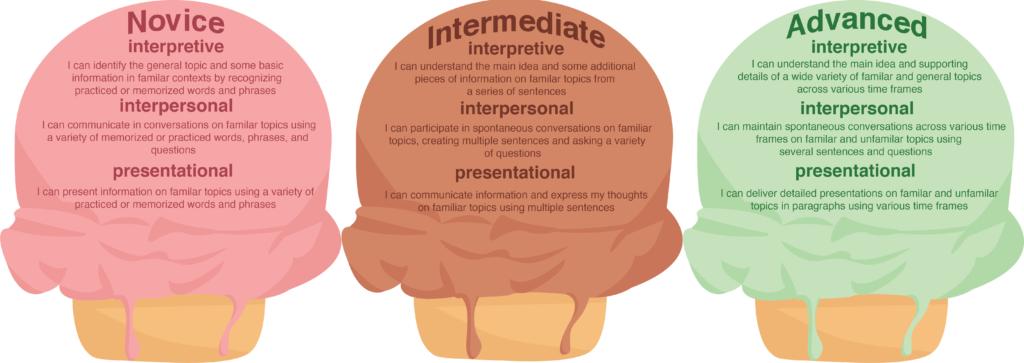Foreign language classes offically switch to proficiency based grade scale

Bradyn Johnson | The Chronicle
Foreign language classes have officially moved to a proficiency-based approach of teaching, which focuses on building fluency, rather than becoming fluent.
In prior years at MHS, language classes such as American Sign Language (ASL), Spanish, French and German utilized the general letter-based grading system. This changed, however, once the Ohio State Department of Education decided that the letter-grade approach was not the most effective way to engage students in acquiring and comprehending various skills and tasks, and would move to a proficiency scale to more effectively evaluate student’s skills and progression.
Class and grade standards are tweaked yearly to ensure that constructive changes are made to course materials in order to benefit a student’s learning and well-being. German teacher Melissa Mason High School (MHS) must abide by the state of Ohio’s rules and regulations regarding all course benchmarks, and it resulted in many teachers having to change the way they evaluated their students.
Jurewicz said that through the new proficiency-based grading system, she saw her students become vulnerable with the process which resulted in an eagerness to learn.
“They understand that it is okay to make a mistake,” Jurewicz said. “And now that that has gone by the wayside, students are much more likely to ask questions and participate.”
Through the new grading scale’s definition of proficiency, teachers have realized that students have started to demonstrate a more accurate representation of what they understand and have learned, in a deeper context than a traditional letter-based scale previously provided.
“This is a more accurate representation of what students can do,” Jurewicz said. “This is a more compelling curriculum.”
Through the proficiency process, students and teachers alike are learning that language classes have more to their course than a grade. Spanish teacher Tom Rapp said that the proficiency approach is beneficial to his students within the realm of acquiring and obtaining new materials and skills.
“The research has recently shown that the more we focus on gaining skill in Spanish as opposed to learning and checking off boxes, we produce students who can use Spanish in real-life situations,” Rapp said.
Rapp said that although all language teachers are in favor of the new proficiency approach, the most difficult aspect for teachers was the physical action of implementing an approach that does not use percentage-based evaluations into a system of grading that does use numbers and percentages.
Although there have been many changes made to the new grading scales and systems, teachers still have to evaluate their students with a traditional letter grade in accordance with state laws. Despite this, teachers are trying to aid students in meeting proficiency requirements to take away the angst of attaining an A in the course. American Sign Language (ASL) teacher Christine Loucks said that each level of proficiency comes with its unique grade since scratching the letter grade system is not plausible.
“We decided to make it work with the standard base language in ASL I, the end goal is a novice high which is using simple sentences,” Loucks said. “That’ll be around an A.”
Every foreign language is different, the levels of proficiency within courses also vary. Loucks said that ASL two is supposed to be a few steps ahead of level one courses even though they are still learning, however, are being evaluated on a different scale according to the skills they are expected to reflect in a level two course.
“They’re expected to achieve just a step higher than they were the previous year,” Loucks said. “That gets them rethinking some things from prior years a little bit.”
The grading scale aims to equip students with a proficient understanding of the language rather than obtaining precise fluency. Rapp said that the new approach allows students to gain a skill rather than learning words and phrases.
“It helps students realize they’re acquiring a skill as opposed to trying to learn facts,” Rapp said.
